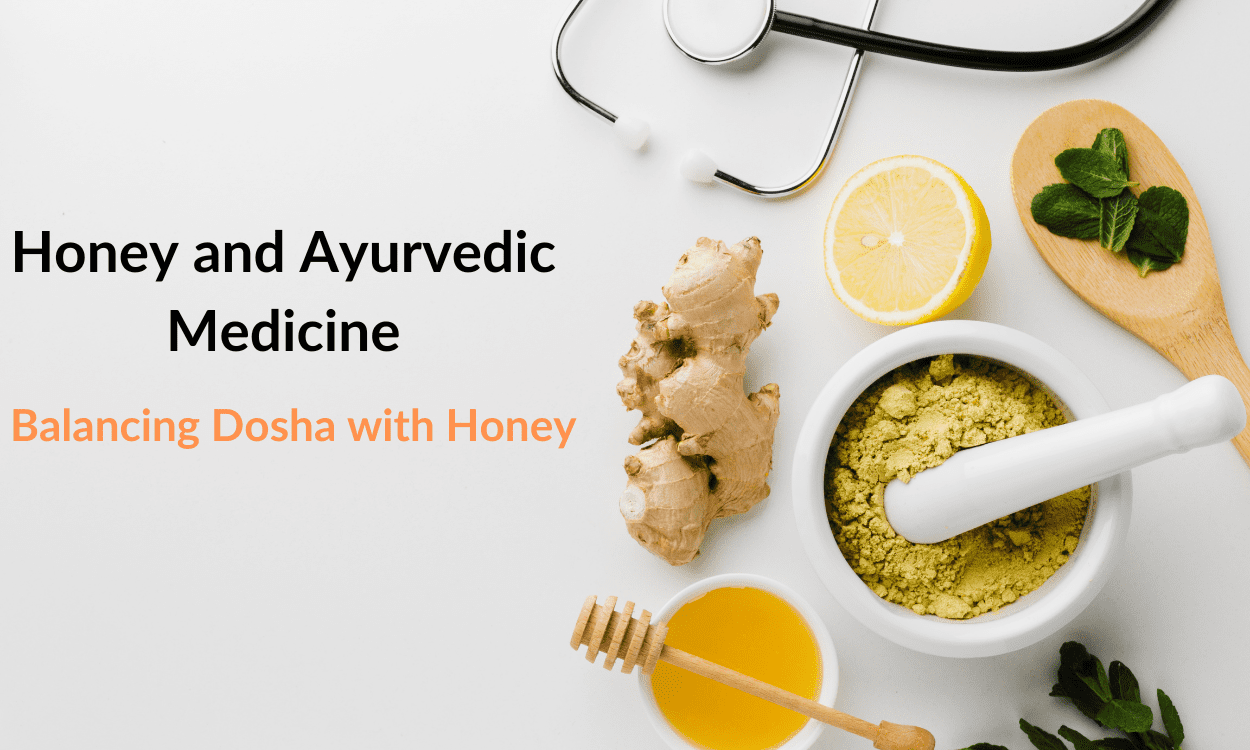

Honey and Ayurvedic Medicine: Balancing Dosha with Honey
In the ancient, holistic system of Ayurveda, the balance of three fundamental life forces, or doshas, is the key to optimal health and well-being. Vata, Pitta, and Kapha each play a critical role in maintaining the body’s delicate equilibrium, and when one or more of these doshas become imbalanced, it can lead to a variety of physical and mental ailments.
As an Ayurvedic practitioner, I’m constantly exploring natural remedies that can help restore and maintain this dosha balance. And one of the most versatile and powerful tools in my arsenal is a humble, yet remarkable substance: honey.
The Ayurvedic Properties of Honey
In Ayurveda, honey is revered as a “divine food” with a wide range of therapeutic properties. It is considered a tridoshic substance, meaning it can positively influence all three doshas – Vata, Pitta, and Kapha.
From an Ayurvedic perspective, honey is:
Vata-pacifying: Honey’s inherent warmth and moisturizing qualities help to soothe and ground the light, airy Vata dosha. This makes it an excellent remedy for conditions associated with Vata imbalance, such as dry skin, constipation, and anxiety.
Pitta-pacifying: The natural sweetness of honey helps to counteract the intense heat and sharpness of the Pitta dosha. This makes honey beneficial for reducing inflammation, improving digestion, and regulating body temperature.
Kapha-pacifying: Honey’s light and dry properties help to balance the heavy, damp qualities of the Kapha dosha. This can be helpful for respiratory issues, excess mucus production, and sluggish metabolism associated with Kapha imbalance.
These versatile properties allow honey to be used as a dosha-balancing agent in a variety of Ayurvedic practices and formulations.
Honey and Dosha-Balancing Remedies
One of the ways honey is utilized in Ayurvedic medicine is as a base or vehicle for other herbs and spices that target specific dosha imbalances. Let’s take a look at a few examples:
For Vata Imbalance: A common Ayurvedic remedy for Vata-related issues is a simple mixture of honey and ghee (clarified butter). The warmth and grounding qualities of both honey and ghee work together to soothe Vata and promote feelings of calm and stability.
For Pitta Imbalance: To pacify excess Pitta, Ayurvedic practitioners often recommend a mixture of honey, rose water, and a pinch of cardamom. The cooling, soothing properties of the rose and cardamom help to counteract Pitta’s fiery nature, while the honey provides a gentle sweetness.
For Kapha Imbalance: To address Kapha-related concerns, honey can be combined with warming spices like ginger, black pepper, or cinnamon. This creates a stimulating, Kapha-reducing concoction that can help boost metabolism, clear respiratory passages, and reduce excess mucus.
The Versatility of Honey in Ayurvedic Self-Care
In addition to its use in Ayurvedic formulations, honey can also be incorporated into various self-care practices to help maintain dosha balance.
For example, honey can be used as a gentle facial cleanser or mask to address skin concerns related to dosha imbalances. A honey and turmeric mask can be particularly soothing for Pitta-predominant skin, while a honey and cinnamon mask can help to decongest and balance Kapha-predominant complexions.
Honey can also be added to Ayurvedic teas and tonics to enhance their dosha-balancing effects. A warm cup of honey-sweetened ginger tea, for instance, can be a wonderful remedy for Vata-related digestive issues or seasonal allergy symptoms.
Furthermore, honey can be used as a natural sweetener in Ayurvedic porridges, soups, and other nourishing dishes. This allows you to enjoy the benefits of honey while also incorporating other Ayurvedic ingredients that target specific dosha imbalances.
The Importance of High-Quality, Raw Honey
It’s important to note that not all honey is created equal when it comes to Ayurvedic applications. For the most therapeutic benefits, it’s essential to use high-quality, raw, unprocessed honey.
Commercial, supermarket honey often undergoes extensive processing, filtration, and pasteurization, which can strip away many of the honey’s natural enzymes, vitamins, and other beneficial compounds. In contrast, raw, unfiltered honey retains these valuable nutrients and maintains its full therapeutic potential.
When selecting honey for Ayurvedic use, it’s best to source it from local, reputable beekeepers who use sustainable, chemical-free practices. This ensures that the honey you’re using is of the highest quality and purity, allowing you to fully harness its dosha-balancing powers.
Embracing the Holistic Power of Honey
As an Ayurvedic practitioner, I’m continually amazed by the versatility and healing potential of honey. This ancient, natural substance has the ability to gently yet effectively address imbalances in all three doshas, making it an invaluable tool for maintaining optimal health and well-being.
By incorporating honey into your Ayurvedic self-care routine, whether through targeted remedies or as a dietary staple, you can experience the profound benefits of this divine food for yourself. So embrace the holistic power of honey and let it guide you towards a more balanced, harmonious life.